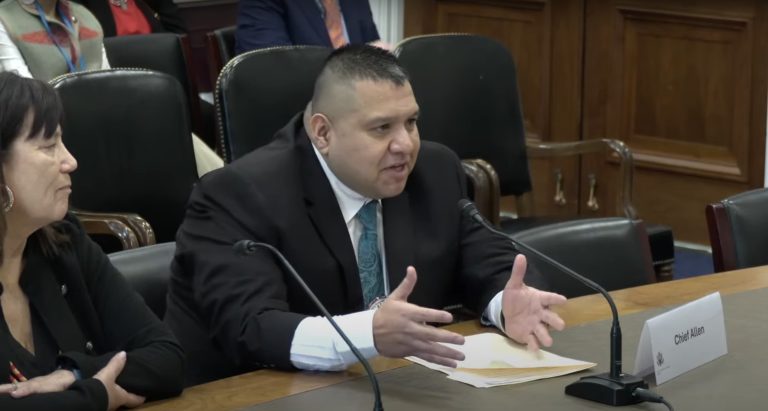Podcast: Play in new window | Download | Embed

Anchor: Antonia Gonzales
A killer whale totem pole has made its journey through the Pacific Northwest to raise awareness of calls to remove dams from the Snake River. Through May, it made stops in tribal communities and cities, as Eric Tegethoff reports.
The Spirit of the Waters Totem Pole Journey began at the beginning of May in Bellingham, near the Lummi Indian Reservation where it was carved. Since then, it’s traveled through Oregon, Idaho and back to Seattle. Jewell James with the Lummi Nation’s House of Tears Carvers is its head carver. He said the pole is 16 feet long, weighs three-thousand pounds and sits on two carved, eight-foot-long salmon.
“A killer whale that has a baby whale on its nose to reflect Tahlequah, the whale that lost her calf and carried it around Puget Sound for 17 days and over 1,000 miles trying to get the message to us, the human beings, that we are killing them off.”
James says the journey is supporting the Shoshone-Bannock Tribes’ call to remove four dams on the lower Snake River in southeast Washington, which are impeding salmon migration. The salmon’s population drop in the Columbia River Basin in recent decades also has starved Southern Resident orcas in Puget Sound. Dam supporters say they are integral for barging and irrigation in the region. But James says there’s growing disappointment among tribes and conservation groups with lawmakers’ inaction as salmon near extinction.
“They’re more prone to protect the interests of corporations than they are the general public, and we find that a little frustrating.”
The journey has brought together tribal members, conservation groups and the faith community to call for the restoration of the Snake River.
 The National Native American Boarding School Healing Coalition (NABS) worked with the U.S. Department of the Interior for months in the development of the recently released federal Indian boarding school report to address the troubled legacy of boarding school policies.
The National Native American Boarding School Healing Coalition (NABS) worked with the U.S. Department of the Interior for months in the development of the recently released federal Indian boarding school report to address the troubled legacy of boarding school policies.
The report found that from 1819 to 1969, the federal Indian boarding school system consisted of 408 federal schools across the country, and identified marked or unmarked burial sites at about 53 different schools.
The NABS is calling for more research and expanded work beyond the federal initiative. NABS board member Joannie Romero says it’s important to uncover documents and educate the public about Indian boarding schools.
“Have access to these records, to church records, to the National Archive, and to also really understand the intergenerational impacts of the trauma it’s had on communities and we’ve seen these ripple effects carried out through the federal Indian law and policy.”
Romero adds it’s also part of the healing process.
“Those who experience trauma while at school, and mourn the loss of their peers who never returned to their communities, and try to reintegrate themselves into Indigenous culture. In general, we see those effects today.”
The coalition is seeking the establishment of a commission to help locate records and gather information from former students and descendants.
Get National Native News delivered to your inbox daily. Sign up for our newsletter today.



